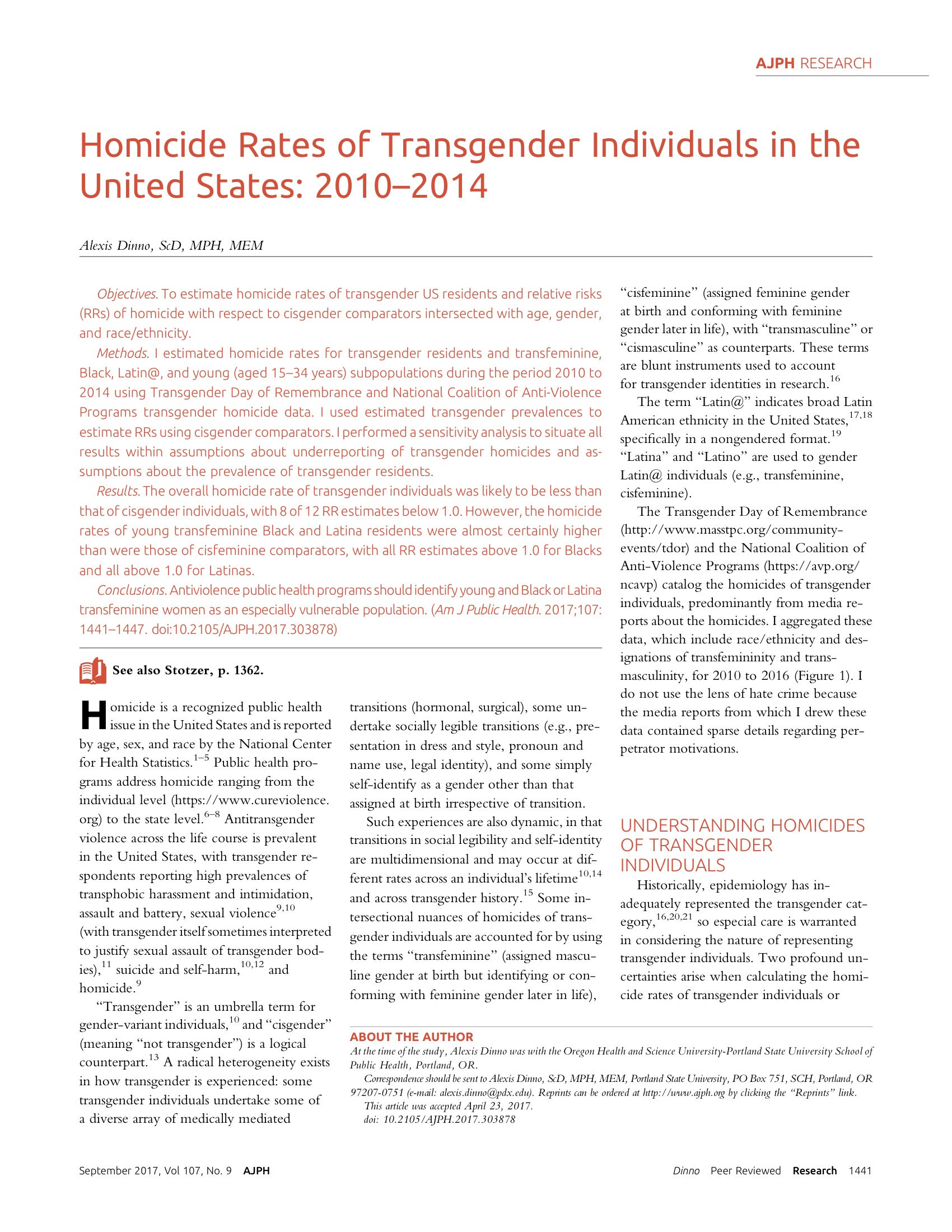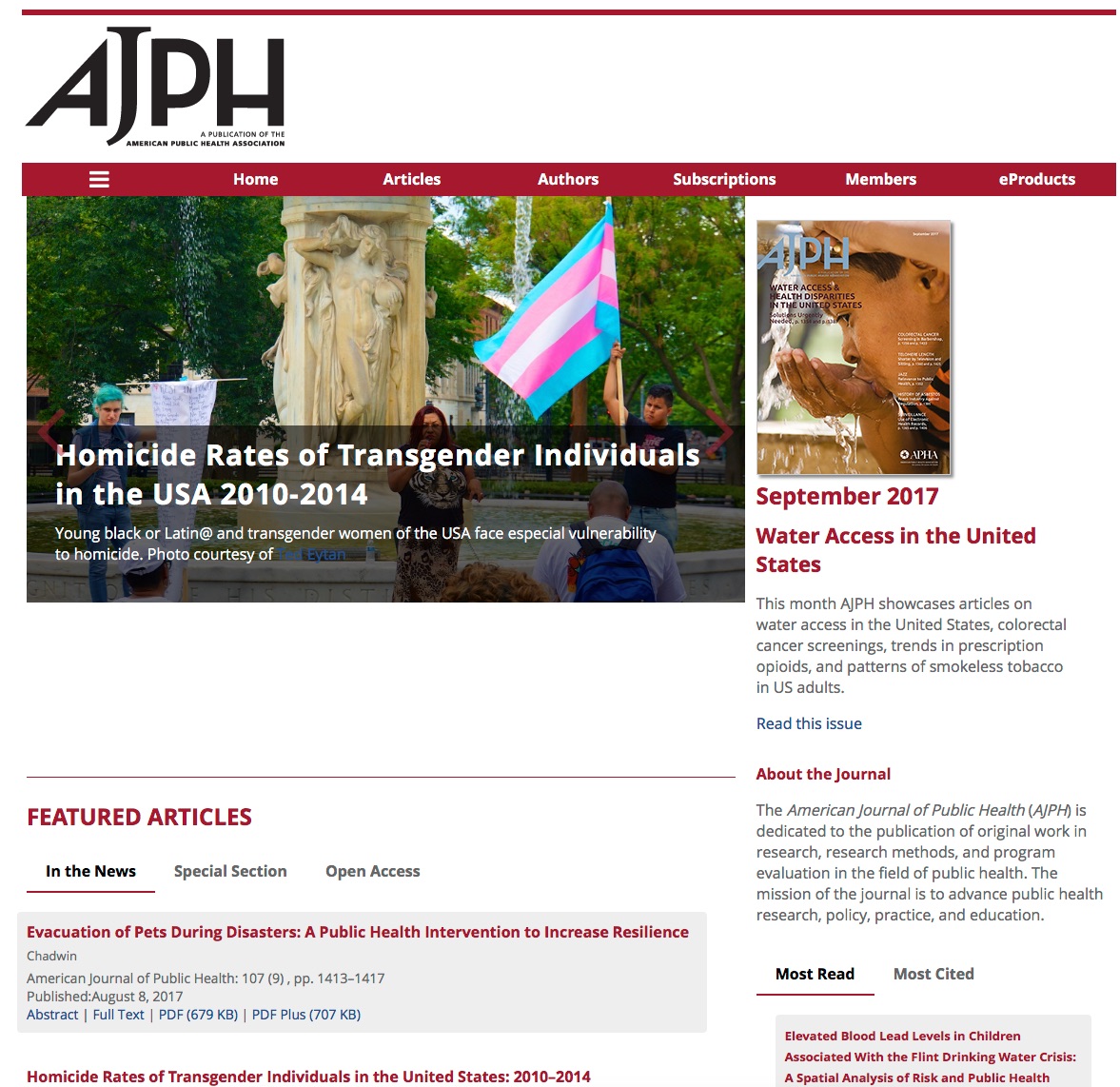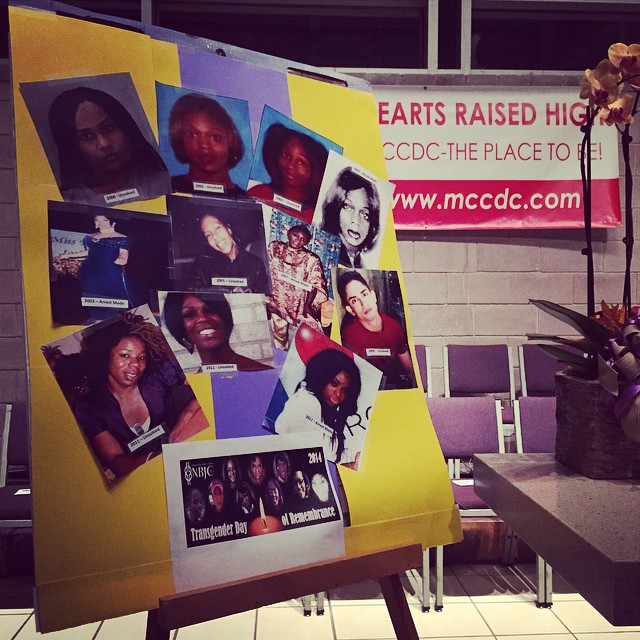


Between 3 and 75 times as often as their cisgender Black female age cohort for Black transfeminine trans women, and between 2 and 44 times as often as their cisgender Latina female age cohort.
In percentages, that’s murdered 300% – 7500% and 200% – 4400% as often.
As the images on the right show I learned about this study because my photograph is being used to adorn the front page of the AJPH website. I actually enjoy the fact that the publication of my work brings me important knowledge, even when the news isn’t good. I’m going to post about the photographs separately and will link that post from here.
This study was published in American Journal of Public Health (@AmJPublicHealth) and authored by Alexis Dinno, ScD, MPH, MEM (what, not on Twitter?) and provides an important look at an issue that is often discussed in the community I call home. Why? Because even if the “upper” end of transgender person prevalence in society is 0.6%, in Washington DC, it’s 2.8%, 5 times (500%) higher than any other State in the United States.
I read the study carefully because the topic is so important, and
- Most of the documented murders of transgender people are women (99%), only 1 documented transgender man homicide 2010-2016
- Most of the documented murders of transgender people are people of color (97.1%)
- Therefore, most of the murders of transgender people are murders of transgender women of color (95.5%)
There are going to be very large problems with undercounting homicides and the prevalence of people who are transgender, which is covered in the paper, and estimates arrived at using multiple techniques.
So, what is being said in our neighborhoods, our parks, and on our streets is true & with a murder rate this high, it’s likely that trans women of color know someone who has been murdered.
Not What You Do, What You Tolerate
It’s easy to quickly see the determinants of this situation if you simply browse the tweets about this article, which distort the data in a transphobic manner.
This behavior notwithstanding, the combined medical and nursing professions have spoken, clearly and conclusively, that covered, medically supervised transition and necessary medical care is to provided to this population. To do otherwise is unethical.
And really, we have as much to do to change the way society perceives people they don’t understand as we do in providing compassionate medical care.
My generation of physicians was created during the most profound ethical crisis in modern medicine which makes our movement essentially unstoppable, and certainly not stoppable by a few tweets 🙂 .
We now have scientists bringing us useful knowledge to assist our efforts. Isn’t this century great?